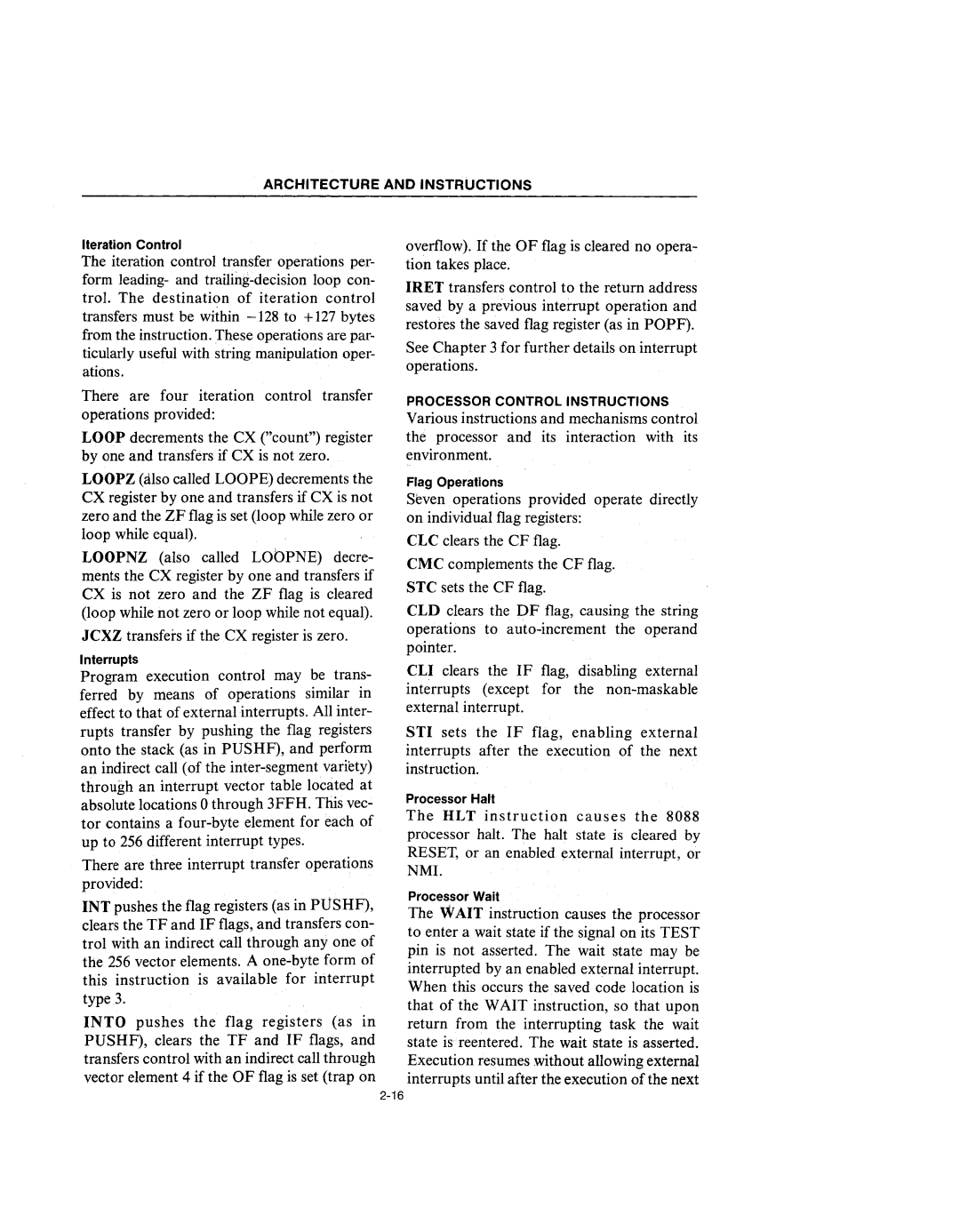
ARCHITECTURE AND INSTRUCTIONS
Iteration Control
The iteration control transfer operations per- form leading- and
There are four iteration control transfer operations provided:
LOOP decrements the CX ("count") register by one and transfers if CX is not zero.
LOOPZ (also called LOOPE) decrements the CX register by one and transfers if CX is not zero and the ZF flag is set (loop while zero or loop while equal).
LOOPNZ (also called LOOPNE) decre- ments the CX register by one and transfers if CX is not zero and the ZF flag is cleared (loop while not zero or loop while not equal).
JCXZ transfers if the CX register is zero.
Interrupts
Program execution control may be trans- ferred by means of operations similar in effect to that of external interrupts. All inter- rupts transfer by pushing the flag registers onto the stack (as in PUSHF), and perform an indirect call (of the
There are three interrupt transfer operations provided:
INT pushes the flag registers (as in PUSHF), clears the TF and IF flags, and transfers con- trol with an indirect call through anyone of the 256 vector elements. A
INTO pushes the flag registers (as in PUSHF), clears the TF and IF flags, and transfers control with an indirect call through vector element 4 if the OF flag is set (trap on
overflow). If the OF flag is cleared no opera- tion takes place.
IRET transfers control to the return address saved by a previous interrupt operation and restores the saved flag register (as in POPF).
See Chapter 3 for further details on interrupt operations.
PROCESSOR CONTROL INSTRUCTIONS
Various instructions and mechanisms control the processor and its interaction with its environment.
Flag Operations
Seven operations provided operate directly on individual flag registers:
CLC clears the CF flag.
CMC complements the CF flag.
STC sets the CF flag.
CLD clears the DF flag, causing the string operations to
CLI clears the IF flag, disabling external interrupts (except for the
STI sets the IF flag, enabling external interrupts after the execution of the next instruction.
Processor Halt
The HLT instruction causes the 8088 processor halt. The halt state is cleared by RESET, or an enabled external interrupt, or
NMI.
Processor Wait
The WAIT instruction causes the processor to enter a wait state if the signal on its TEST pin is not asserted. The wait state may be interrupted by an enabled external interrupt. When this occurs the saved code location is that of the WAIT instruction, so that upon return from the interrupting task the wait state is reentered. The wait state is asserted. Execution resumes without allowing external interrupts until after the execution of the next
